During the past ten years companies have become much more aware of the type of lubricants and other nonfood compounds that are used in the plant. From a South African context, the awareness about nonfood compounds is driven by the Food Safety initiative, ISO food safety Standards, compliance and audits and regulations.
Food grade lubricants quality has improved so significantly that they are as good as non-food grade products. It’s a myth to assume that Food Grade H1 lubricants (incidental food contact) are not as good as the H2 Lubricant (No Food contact) Food processing generally involves machinery and accessories such as pumps, mixers, tanks, gearboxes, hydraulics, hoses, pipes, drive chains and conveyor belts.
According to Orsi Dézsi the Business Unit Manager at NSF International, the current issue of the BRC Global Standard for Food Safety states: “Food-grade lubricants are formulated in such a way that if small quantities of technically unavoidable residues enter the processed product, they have no adverse effect and are deemed innocuous in terms of health, taste and odour. However, it should be noted that food-grade lubricants are not intended for human consumption or for contact with skin or mucous membranes.
What product should I use
This list provides you with an overview of the classification of products and what this means in your production environment
Summary of NSF Classified products
- NSF H1 Acceptable as a lubricant with incidental food contact for use in and around food processing areas
- NSF H2 Acceptable as a lubricant where there is no possibility of food contact in and around food processing areas.
- NSF 3H This product is acceptable for use as a release agent (3H) on grills, ovens, loaf pans, boning benches, chopping boards, or other hard surfaces in contact with meat and poultry foods to prevent food from adhering during processing. This product is also acceptable as a lubricant with incidental food contact (H1) for use in and around food processing
- NSF A1 Acceptable for use as a general cleaner on all surfaces in and around food processing areas, where its use is not intended for direct food contact.
- NSF C1 Acceptable for use in inedible product processing areas, nonprocessing areas, and/or exterior areas of food processing establishments provided that it is not used to mask odours resulting from unsanitary conditions, and that any characteristic odour or fragrance does not penetrate into an edible product area.
- NSF E1 Acceptable for use as a hand cream, lotion or cleaner in nonprocessing areas
- NSF K1 Acceptable for use as a cleaner and degreaser for use in non food processing areas, which are used to remove oil, wax, resinous materials, or other substances not removable by using acidic or alkaline cleaning agents. Their use is limited to non-processing areas where there is no possibility of solvent vapours entering a processing area
- NSF K2 Acceptable for use as a solvent for cleaning electronic instruments and devices, which will not tolerate aqueous cleaning solutions in and around food processing areas, where its use is not intended for direct food contact.
- NSF K3 Acceptable for use as an adhesive or glue remover, for removing adhesive or glue from food packaging materials in and around food processing areas, where its use is not intended for direct food contact.
- NSF M1 Acceptable for use as a mould release agent on moulds that are used to produce packaging materials that will contact food to prevent the finished product from adhering to the mould.
- NSF M1 Acceptable for use as a TFT, LCD and plasma screen cleaner (P1), in and around food processing areas. The product must only be used in such a manner as to ensure it will have neither direct nor indirect contact with food or potable water
- NSF R1 Acceptable for use as a coating where there is no possibility of food contact such as floors, walls, and ceilings
Companies are now more so than ever, identifying suitable products per application, ensuring they are 3rd party verified. By conducting surveys and getting industry specialist to assist are sensible initiatives, however there are still several risks and pitfalls that can be avoided by knowing what not do…
What practice to avoid when using lubricants in the food industry
What to avoid
|
Correct action*
|
|
Avoid taking it for granted that maintenance staff understand NSF Classifications for Food Grade Lubricants
|
Ensure maintenance staff are trained by qualified trainers that provide a written training plan and provide training records
|
|
Avoid storing H1 & HT1 & 3H products with other products
|
Keep them separate and ensure that they are free on cross contamination
|
|
Avoid changing lubricants original packaging
|
Keep where possible in the original packaging
|
|
Avoid Non-Food Compounds that are NOT Classified By using unclassified products will increases contamination risks
|
Ideally All Non-Food products need to be at least classified by credible third parties such as the NSF
|
|
Avoid using grease guns that are not see through
|
Transparent colour coded grease guns provide certainty as to what is in the grease gun.
Dedicated lubrication equipment
|
|
Avoid the “hands on’’ method and only use clean sanitised equipment for extracting the grease and or lubricants from the containers
|
Do proper risk assessments for extracting oils and grease to ascertain whether it’s a CCP
|
|
Avoid Storage areas that are moist and areas exposed to extreme temperature variations
|
Moisture can be drawn into open containers during the night
|
|
Avoid dirty funnels or measures
|
Funnels should be cleaned before and after use
|
|
Avoid not having a set of clear procedures for food grade lubricants *
|
Lubrication management system should have
· Lubrication survey
· Production of job sheets
· Correct lubricants usage / application per machinery or equipment
· Amount and frequency of lubricant
· Monitoring of lubricants
· Sampling and testing
· Record and archiving
|
|
Avoid hazards –
· Leaking from bearings
· Drips and splashes from open lubrication points
· Leakage from oil circulation systems
· Contact between oil coated surfaces and food
· Spillage during machine maintenance
· Contamination of Compressed air
· Misuse of oils
|
Preventative measures
· Wipe off excess lubricants and remove soiled rags
· Repair leaking equipment
· Tools to be cleaned before and after use
· After repairs clean the equipment and surrounding areas
|
|
Avoid contact with food
|
If contact with food is observed, then appropriate corrective action must be taken
Production should be stopped immediately
Remove contaminated food
|
|
Avoid contamination Food Grade Lubes
|
· Food Grade Lubes can be contaminated by non food grade lubes that then render them unsuitable for further use
· Contamination with water will reduce the working life of the machine parts
· Contamination with water, drinks, food can create a breeding ground for growth of bacteria and fungus
· Contamination by corrosion particles caused by rust of machine parts or packaging
|
|
Avoid not doing lubricating analyses and testing
|
· Oil analyses programme indicate the remaining useful life of the lubricants
· Oil sample should be drawn into clean bottles
· Oil analyses provide information to determine working trends
|
|
Avoid using H2 lubes in the food areas whilst in production of food products
|
· H2 Lubes are classified to have NO contact with food whatsoever and hence should not be used in a food industry plant whilst in production
· H2 Lubes can be used during maintenance shutdowns and then afterwards the equipment and areas need to be thoroughly cleaned
|
Figure 1: Contaminated Food Grade Lubes
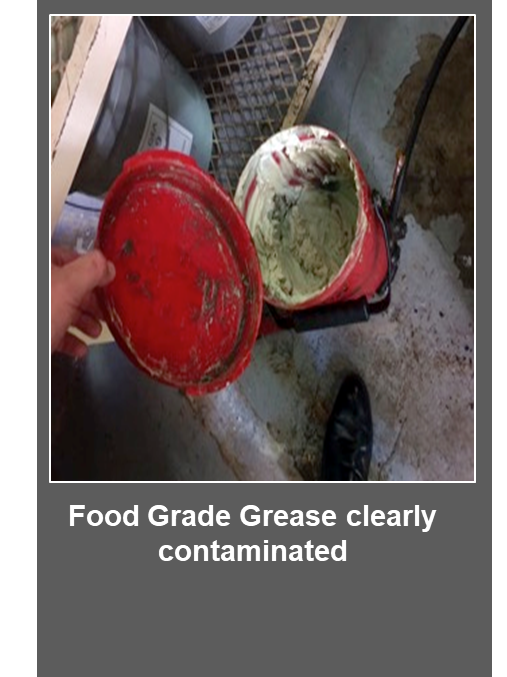 |
|
Figure 2: Colour codes Lubricant containers**
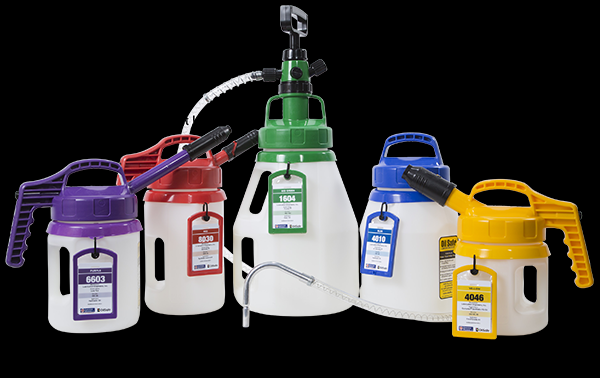
|
|
Figure 3: Shape and Colour Coding guide**
** LE Engineers
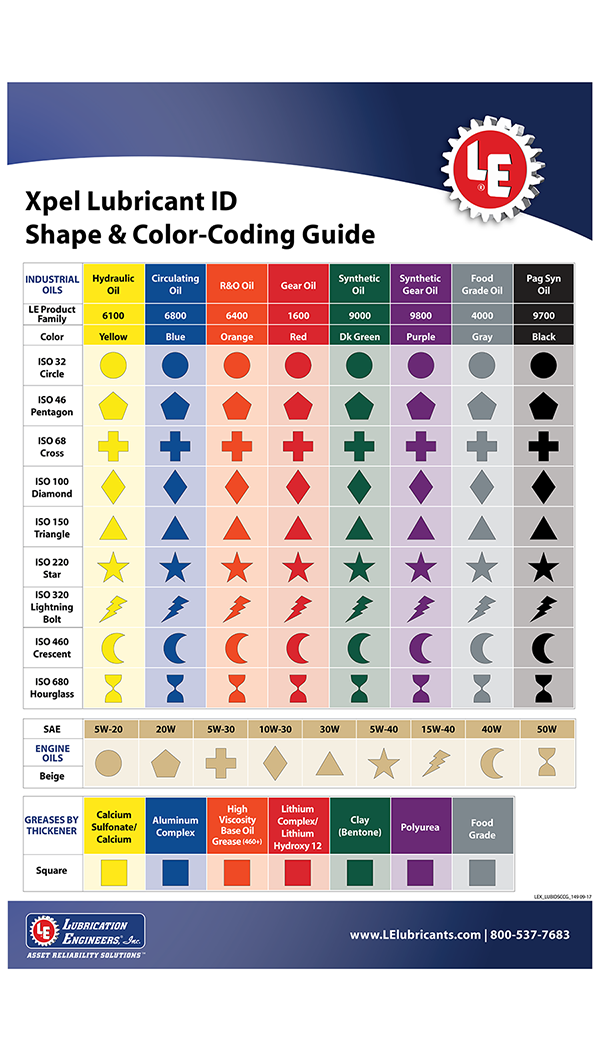
|
|
Figure 4: Separate the storage of Food Grade Lubes from non-food grade lubes and chemicals
CRC Industries Greenlight Program
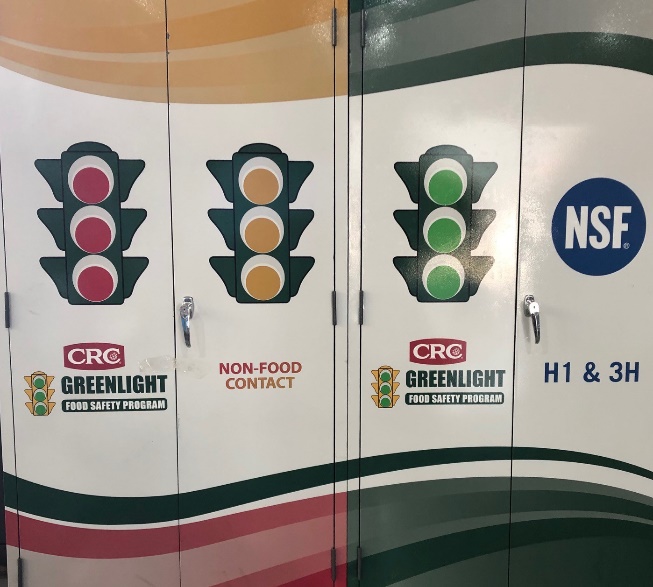
|
|
Figure 5: On Site training
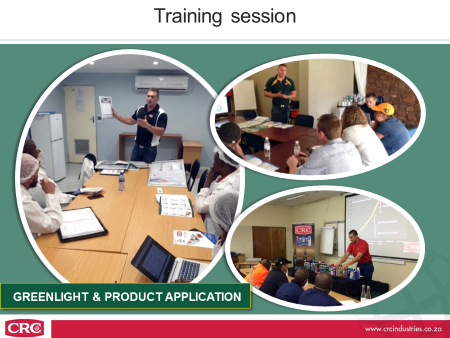
|
References:
Challenges in the use of food-grade lubricants - Orsi Dézsi etal
*EHedge Guidelines Doc 23 – Part1 Use of H1 and HT1 registered lubricants 3rd Edition Sept 2018
(Group, 3rd Edition, September 2018 ) CRC Industries RSA Order 421914
** LE Engineering https://www.lelubricants.com/








